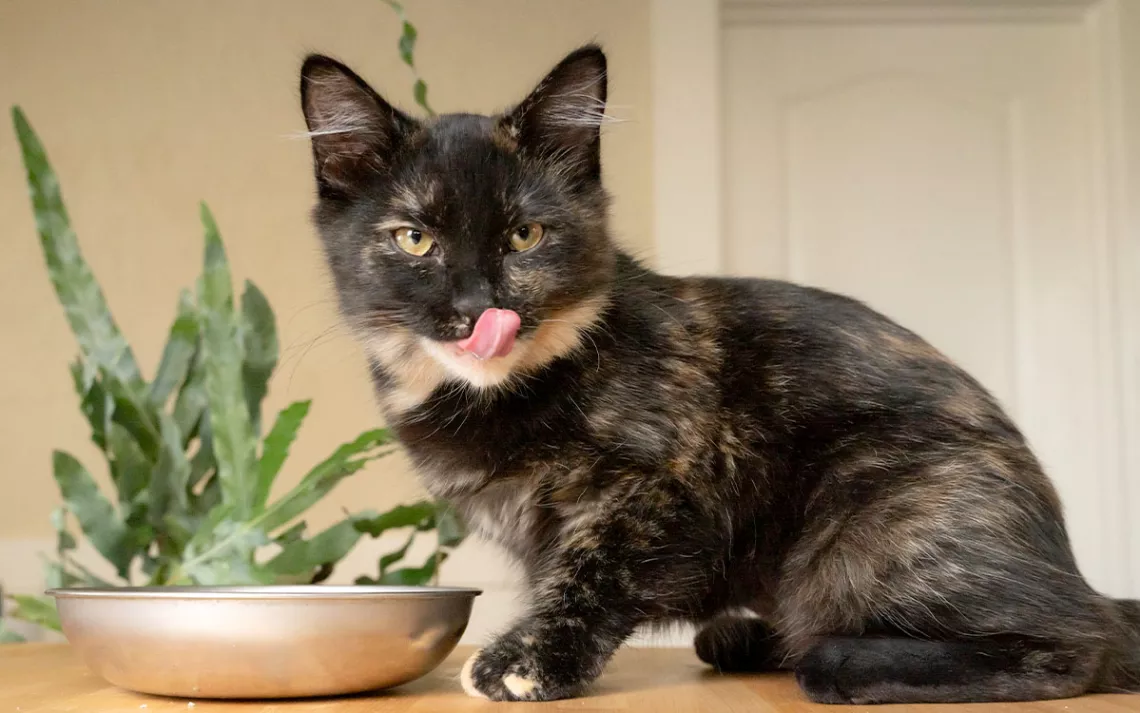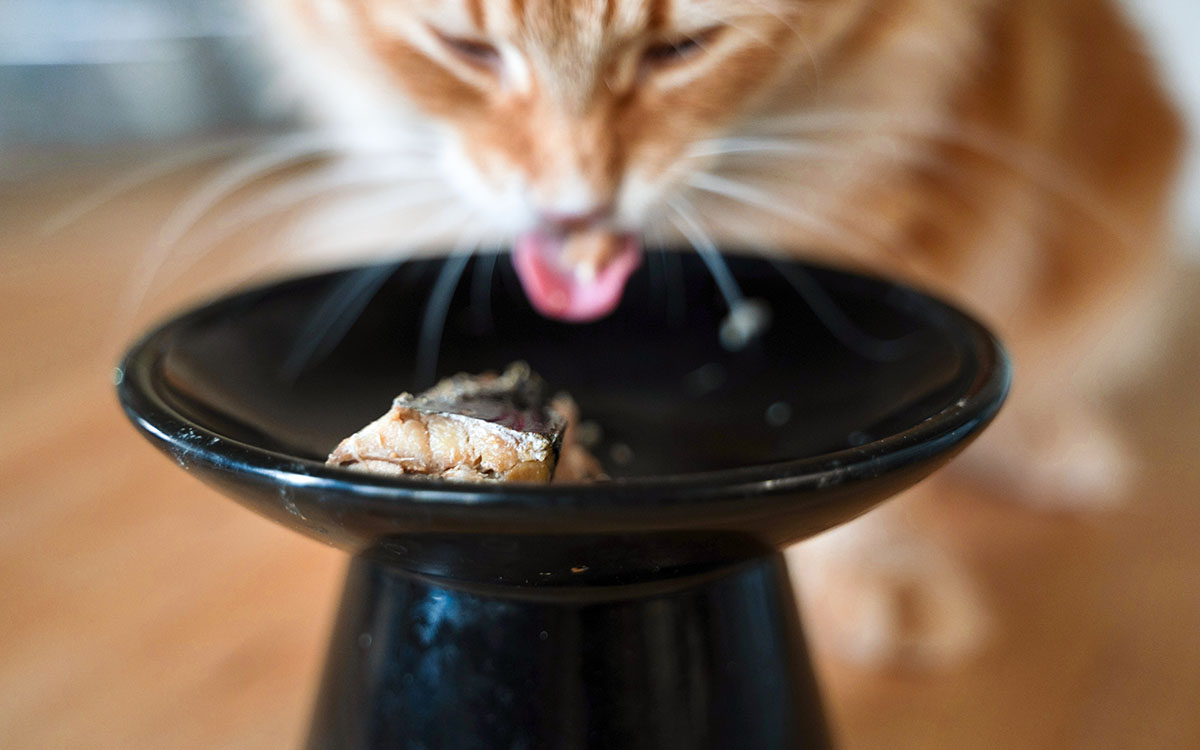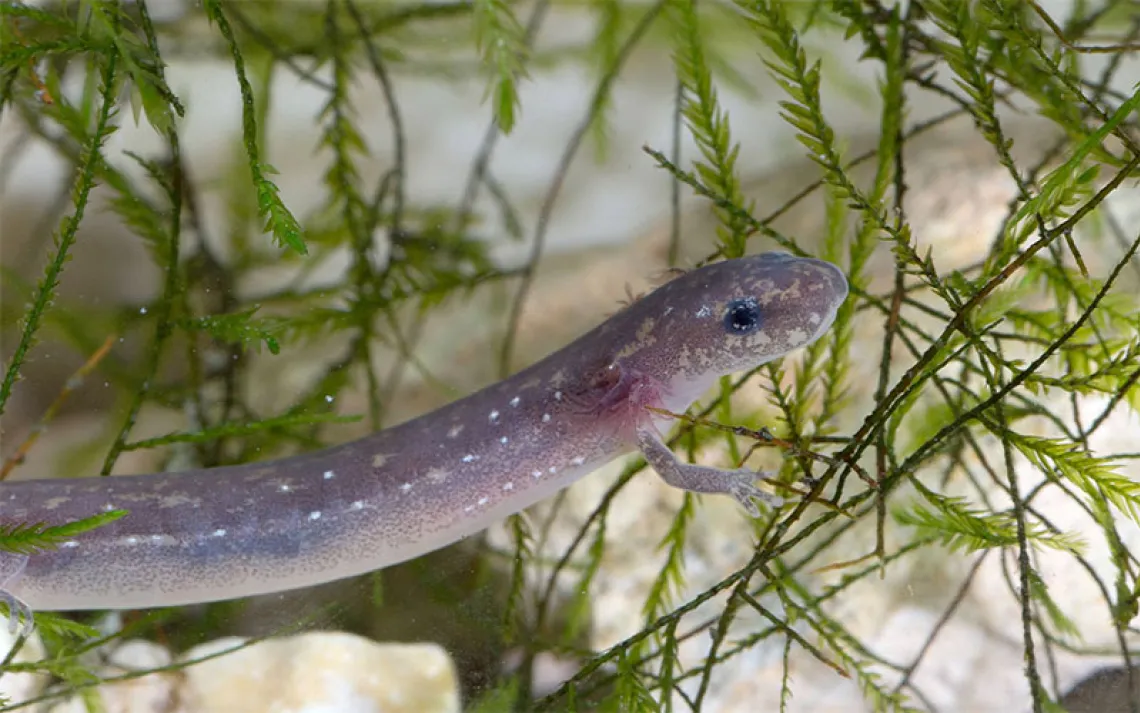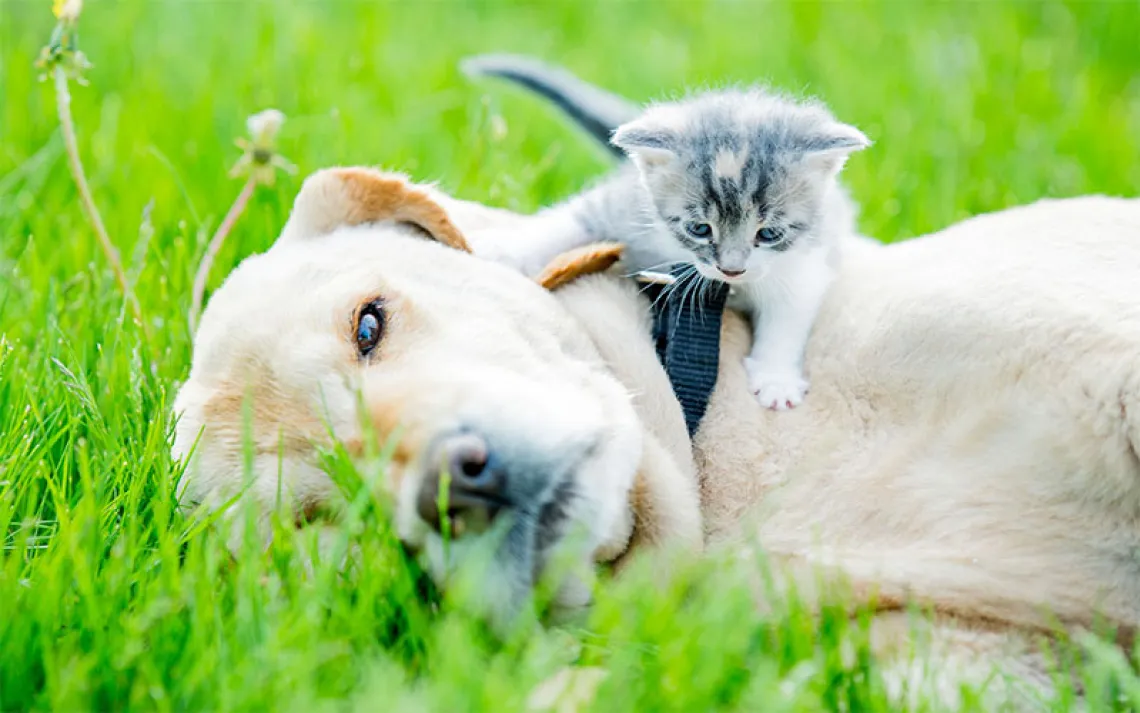ENVIRONMENT EXPLAINED
How Can I Feed My Pet Sustainably?
Here’s how you can reduce your pet’s carbon pawprint

If an eco-conscious diet is important to you, chances are you’ll want the same for your pet. Fortunately, in the past few years, scientists, pet food companies, and nutritionists have made strides toward making more sustainable alternatives to traditional cat and dog food. However, each of these alternatives has its share of skeptics, and vets caution that there can be significant risks. For example, a common argument is that unlike us, cats and dogs have to eat meat to get the nutrition they need to lead healthy lives. But is that really true?
Here is everything you need to know about how to feed your pet a nutrient-dense diet that will serve you both and the planet.
Vegan
Perhaps the most controversial of the sustainable offerings out there is vegan pet food. “Since 2020, there has been an explosion of research in this area,” says Andrew Knight, a veterinary researcher at Murdoch University in Australia.
Putting our furry friends on vegan diets would arguably be the most sustainable option when it comes to environmental impact and livestock animal welfare. Livestock production accounts for around 10.6 percent of the United States’ greenhouse gas emissions. And according to a well-known 2017 study, pet food accounts for as much as 25 to 30 percent of the environmental impact of meat consumption in the United States.
According to surveys Knight has overseen, most consumers’ concern with feeding their pets vegan diets is that they won’t receive adequate nutrition without meat. However, Knight doesn’t think meat is necessary for pet food to be nutritious. “Dogs and cats don't require any particular ingredient, such as meat,” he explains. “What they do require is a certain specific set of nutrients.”
Knight explains that to make meat safe for consumption, pet food companies heat it to very high temperatures, a process that also gets rid of a lot of the ingredients’ inherent nutrients. As a result, companies have to add synthetic nutrients back in to make sure their product meets all its requirements.
If the nutrients in your pet’s food aren’t coming from meat anyway, Knight argues, why not make the base more sustainable? Putting vegan pet food to the test in a series of studies, Knight found that dogs fed a vegan diet for at least one year had a lower rate of illness and a lower likelihood of experiencing some common health disorders as compared to dogs fed a conventional diet. As of late July, the British Veterinary Association had endorsed nutritionally sound vegan diets for dogs.
However, many still oppose vegan pet diets, especially for cats. Unlike dogs, which are omnivores and can digest carbohydrates fairly well, cats have little to no nutritional requirement for carbs. According to Jennifer DeSchryver, a feline nutritionist who owns the popular website and Instagram page The Raw Fed Feline, many dry commercial foods, including dry vegan food, have carbohydrate contents of 50 percent or more. “When you give a hyper carnivore, like a cat who has zero requirement for carbs, this food that's 50 percent carbohydrates, you just tank their little system,” she says. “You end up with cats who struggle with diabetes and obesity, pancreatitis, because dry food is literally the opposite of what cats are supposed to eat.”

Sign up to receive Sierra News & Views
Get articles like this one sent directly to your inbox weekly.
With this action you affirm you want to receive Sierra Club communications and may vote on policy designated by the Sierra Club Board.
Even for dogs, or for wet vegan cat foods that have fewer carbs, DeSchryver is not convinced that using vegan proteins and tacking on the necessary nutrients would provide the same benefits as feeding a whole food, such as unprocessed meat. “You can take a piece of cardboard and you can infuse it with vitamins and minerals, and it will meet the numbers for vitamins and minerals,” she says. “But most of us would say it's probably not a great idea to eat cardboard, even if it is enriched.”
Homemade
It can be difficult to find how and where the meat in traditional pet food is sourced, making it impossible to know if a product is sustainable or not. Moreover, many brands will put more than one type of meat in a given product: Many chicken-flavored wet foods, for example, also have fish of an unspecified species in their ingredient list.
By making their furry friend’s food at home, pet owners are able to choose what meat to buy and where. They can choose proteins that have a lower environmental impact, such as chicken, turkey, duck, rabbit, or even frozen whole mice and quail, and buy their meat from purveyors who are committed to ethical and sustainable practices.
For animals with sensitive stomachs, DeSchryver says that homemade pet food can be easier to digest than commercial foods. And even for animals without food sensitivities, studies show that eating a raw food diet can result in smaller and drier stools, which according to DeSchryver indicates that the animal is using more of the nutrients from their food and eliminating fewer unusable products as waste.
Like vegan food, homemade pet food can be controversial, especially when served raw. The American Veterinary Medical Association does not recommend raw food for dogs or cats, citing health and safety risks to both people and pets as a result of potential bacteria in the uncooked meat. Logan Kilburn-Kappeler, a companion animal nutritionist at Iowa State University, is also concerned about homemade pet food being nutritionally complete. Unlike the prey that cats or dogs might eat in the wild, meat purchased from the store does not have all of the nutrients that your pet needs. To make a homemade diet nutritionally complete, components like organs, bone, fatty acids, and in some cases vegetables will need to be added in.
According to DeSchryver, making nutritionally balanced homemade meals doesn’t need to be complicated. “Sometimes people see very beautiful, artistic looking bowls of raw pet food on social media, and they think, ‘Holy smokes, I can't do that,’” she says. “But raw feeding can actually be very easy and accessible.” Some small businesses such as Food Fur Life offer meal completers that have all the necessary components, which you can mix with your meat of choice to make a balanced meal.
Nonetheless, if you are planning on making your pet’s food at home, Kilburn-Kappeler cautions that you have to do your research, and ideally work with a nutritionist to make sure the food is adequate for your pet’s health. “For some, it works out great, but it is risky; there's a lot of thought that needs to go into that prior to going that route,” she says.

Lab Grown
If you’re not comfortable feeding vegan and don’t have the time to make your pet’s food from scratch, a potential alternative that is still gaining traction is lab-grown meat. To make lab-grown meat, companies harvest cells from one chicken egg, then “brew” these cells in giant vats by feeding them with essential acids, vitamins, and other nutrients, much the same way we make beer or yogurt. Companies that produce lab-grown meat for pets, including UK-based company Meatly and US-based company Bond Pet Foods, have plans to sell their cultivated meat to existing pet food companies, as well as to eventually produce their own pet food for individual consumers to buy.
Lab-grown meat for pet consumption is still a very new concept. In July, Meatly became the first company in the world to receive approval to sell cultivated cat food, and plans to launch samples of its branded pet food later this year. So it might be a few years before lab-grown pet food becomes accessible to everyone.
Moreover, not everyone is convinced that lab-grown meat is better for the environment than animal-harvested meat. A study published last year found that lab-grown beef might actually produce more carbon emissions than animal-harvested beef, and that focusing on more climate-friendly cattle production may lower emissions faster. Some argue that components of lab-grown production, such as the culturing medium, would become very emissions-costly to produce at a large scale.
Standard Commercial Pet Food
So what if all these other diets aren’t appealing, or too complicated for your busy schedule? According to Kilburn-Kappeler, it is still possible to feed your pet sustainably on meat-based, “brown and round” pet food. The Pet Sustainability Coalition, a nonprofit organization founded by nearly 30 business leaders from various pet food companies, has a list on its website of brands that have met high standards for sustainable practices.
Other companies are also making the move toward sustainability, driven by increasing consumer demand for sustainable products. Pet food magnate Mars Petcare, for example, has partnered with the World Wildlife Fund to hit a goal of sourcing only sustainable seafood for its brand Sheba. Kilburn-Kappeler emphasizes that packaging is also an important component of sustainability and encourages consumers to look out for pet foods that use recyclable packaging and minimize their purchase of single-use plastics.
DeSchryver has the same issues with commercial dry food as she does with vegan food: The high carbohydrate content makes it less than ideal for cats, she says. However, if you can find a sustainable wet food that is high in protein and doesn’t use many carbs, she says, that would be a good option.
Don’t Be Afraid to Experiment
If you want to feed your pet sustainably but are worried it won’t be good for your cat or dog, Kilburn-Kappeler says there’s no harm in experimenting. “You don’t need a scientific lab to figure out what’s healthy for your pet,” she says. When deciding on food for her cat and dogs, she looks at their weight and body condition, stool quality, and coat quality while eating that food. If your pet is a good weight, has relatively small, firm poop, and a nice shiny coat with minimal dandruff and itching, these are all signs that your pet’s food is meeting their nutritional needs. She emphasizes too that sustainable pet food is a growing field; options we haven’t heard of might become available as more research is done.
“It’s a complicated industry,” she says. “But that’s what makes it so exciting.”
 The Magazine of The Sierra Club
The Magazine of The Sierra Club



